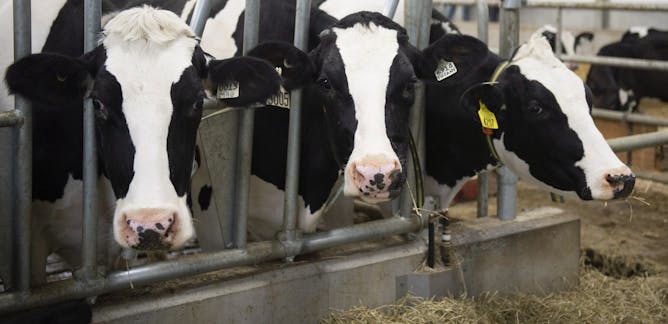
Articles on Influenza
Displaying 1 - 20 of 289 articles

Bird flu in U.S. dairy cows has Canadian public health experts on high alert. With one human case identified in Texas, what is the likelihood of H5N1 influenza moving from birds to mammals to people?

At the moment, a child’s access to certain shots can differ depending on whether they live in Queensland or Tasmania.

For now there’s no spread of H5N1 between humans, which is good news. But bird flu is evolving, and we need to stay vigilant.

Māori and Pacific people already face a disproportionate burden of influenza and a persistently reduced life expectancy. Lowering the age for free flu vaccination is essential for achieving equity.

It may be safest to get your flu shot sooner rather than later.

People should minimise contact with birds in areas affected by bird flu viruses, including farms and settings where live animals may be sold or slaughtered.

People with long COVID have already fought hard to become visible.

The current triple epidemic of respiratory viruses is affecting all age groups, prompting comparisons with the pre-COVID-19 era.

Avian influenza has killed a polar bear and may have infected other bears.

A deadly strain of bird flu is circulating in animals. So far the virus has been detected in seabirds on islands near Antarctica. What does this mean for wildlife, tourism and research?

This is expected to be the smallest Omicron wave so far. But eligible older and vulnerable people are still recommended to have a booster.

New and innovative thinking is needed to deal with the reality on the ground in South Africa.

The COVID pandemic made flu less severe. But now flu is back with a vengeance and all eyes are on Australia.

It can be difficult to an appointment to see your GP. So when should you make the effort to see a GP for a prescription for influenza antivirals? And how effective are they?

COVID, the flu and RSV spread from person to person through respiratory droplets when someone coughs, sneezes or talks. Here’s how our body fights them off.

Despite an abundance of research on strep, there is still a great deal of debate in the scientific community over whether and when people should get tested and treated for it.

Rates of flu vaccination are down for children. That leaves them and us vulnerable to the flu and its complications.

Firstly, there is no such thing as ‘too much’ immunity. Beyond the regular side-effects of a vaccine, there are no known additional risks to being re-vaccinated soon after an infection.

Our immune system fights infection and has a nifty way to letting our brain know we are sick and should take it easy – but that can also be a pain.

Flu vaccines remain the most effective method available to prevent flu illness, especially severe illness.
